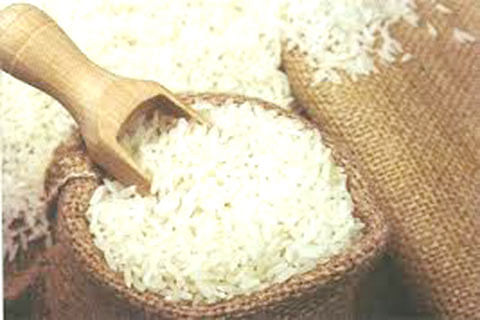Octogenarian Ghulam Nabi Bhat who owns few Kanals of paddy land in Harwan outskirts vividly remembers how native verities of rice were the only thing that they knew of in old times.
The Kashmir’s heritage rice verities like Mushk-Budji, Zag and others were the only things they cultivated when hybrid varieties were yet to make their way into the rice fields of Kashmir, recalls Bhat. In the rice farming, as farmers turned to high yielding hybrid verities, the heritage rice in Kashmir swiftly went out of the system.
“Another reason was that owing to low economic value of cultivating indigenous rice brands many turned to growing fruits which give higher returns. Almost all the relatives that I know either converted their rice fields to apple orchards while others turned to cultivating hybrid rice varieties over the past decades. However the special taste, quality and health benefits that were into our heritage rice remain unmatchable,” Bhat said.
Such is the situation now that the rice varieties like Mushk-Budji known for its magnificent aroma is grown in some patches of Anantnag while Zag known for its reddish hue is grown in few places around Karna and Lolab belt.
Dr Asif Bashir Shikari, associated professor at SKUAST-K who has worked on rice cultivation and native rice brands of Kashmir for over 15 years told Greater Kashmir that over past more than a decade scientists at research centers like SKAUST have taken multiple steps to preserve these brands. He said scientific breakthroughs were made to make these heritage brands more standard. However he agreed that from wide cultivation in past they are now grown in only a handful places.
“First of all these heritage rice types like Mushk-budji, Zag and others are indigenous to Kashmir and are the identity of Kashmir. Research work has shown that they not only possess unique qualities but have many health benefits too. It has been found that in Zag, there is more iron content than normal rice which can help in fighting anemia. Mushk-Budji don’t only have great aroma but is high in protein and have other health benefits,” Shikari said.
He said that when it comes to yield, the yield of such crops is usually low but quality is high. He said that while normal hybrid rice gives yield of 6 to 7 tons per hectare, the indigenous rice yield is around four tons per hectare. “However it is compensated by the quality and high cost of the native rice brand. With well throughout branding and other initiatives by entrepreneurs, a good business can be done,” he said.
Shikari along with his fellow scientist, Dr Najeeb ul Rehman Sofi are heading almost all the rice related projects and research work at SKUST-K. They said many scientific interventions are being taken for the betterment of these native varieties.
“We have saved over 90 types of indigenous rice types in our university gene bank. Only 3 to 4 are known to most of the people. Most of them are not grown and are believed to be extinct but we have preserved them so that in case an initiative is taken we have seeds at hand. Another kind of indigenous rice is called Nun Beyol (Salt-seed). Over the years we have refined the seed of these rice brands,” they said.
Asif said that through various breakthroughs, they have improved the quality of these rice varieties. “Previously farmers were giving up cultivating Mushk-Budji due to rice blast disease. We took up the project and improved the seed till it was free from the disease. Likewise we took up a project to increase the quality of aroma in Musk-Budji,” he said.
Experts believe that if youth are trained and initiatives are taken, cultivation of heritage rice will benefit farmers and will also help in preservation of our heritage rice.
Director Agriculture, Choudhary Mohammad Iqbal said that introduction of high yield varieties pushed out the native rice brands. He said that government, scientists are taking farmers onboard to revive and recognize our native brands.
“Our department over the past few years have taken various initiatives like procurement of heritage rice seeds which were later distributed among farmers to encourage its cultivation. We are also having these rice brands GI tagged to get them international recognition and help to open doors for international markets. This will encourage farmers to grow them,” he said.






